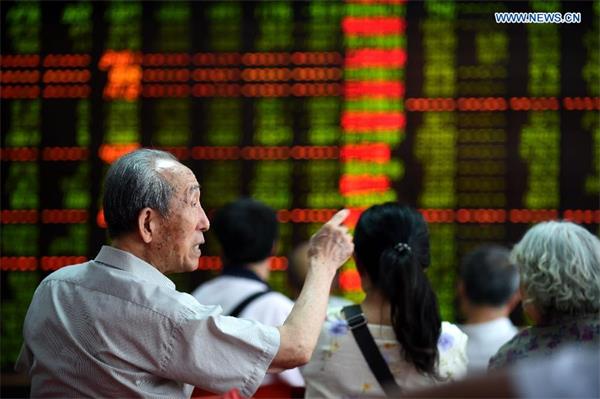


The benchmark Shanghai index slid 2.5 percent as stocks retreated on Monday after the government announced its plan to introduce the circuit-breaker mechanism intended to reduce extreme market volatility.
The Composite Index closed at 3,080.42, down 79.75 points, after swinging as much as 151.28 points, while the Shenzhen Component Index edged down 0.6 percent to close at 9,991.76.
Banks led the loss as the market speculated that State-backed funds had stopped buying. China Communications Bank plunged 10 percent, Minsheng Bank dived 9.3 percent and Industrial and Commercial Bank of China 8.7 percent.
Smaller-cap stocks rose, as the ChiNext Index, tracking China's NASDAQ-style board of growth enterprises, climbed 2.1 percent, led by software and computer technology firms.
In a speech over the weekend at a G20 meeting, central bank governor Zhou Xiaochuan said the recent corrective process in the country's stock market has roughly been in place, and the market will be more stable, Xinhua reported.
About $5 trillion in market value has evaporated amid the rout, as the Shanghai gauge sank 40 percent from its June 12 peak by Monday's close.
"Market leverage has fallen sharply since the correction, but this has not incurred any notable impact on the real economy," Zhou said.
The securities watchdog announced on Sunday evening that it is drafting a plan to implement the circuit-breaker mechanism, where stock exchanges would temporarily halt trading to avert panic selling after the stock index has fallen a certain percentage.
The CSI 300 Index closed at 3,250.49 on Monday, down 3.4 percent.
 Models change clothes on street in Hangzhou
Models change clothes on street in Hangzhou Charming iron ladies in China's upcoming V-Day celebrations
Charming iron ladies in China's upcoming V-Day celebrations In pics: armaments displyed in massive military parade
In pics: armaments displyed in massive military parade Charming Chinese female soldiers
Charming Chinese female soldiers Volunteers required not taller than 5ft 5in
Volunteers required not taller than 5ft 5in  Czech pole dancing master teaches in Xi'an
Czech pole dancing master teaches in Xi'an Shocked! PLA smokescreen vehicle drill
Shocked! PLA smokescreen vehicle drill Foreigners experience tranditional Chinese wedding
Foreigners experience tranditional Chinese wedding Blind date with bikini girls in Nanjing
Blind date with bikini girls in Nanjing The men are taking off
The men are taking off Rights to ratify Dalai restated
Rights to ratify Dalai restated More Chinese having online affairs
More Chinese having online affairs  Who should clean the Arab Spring mess?
Who should clean the Arab Spring mess? Day|Week